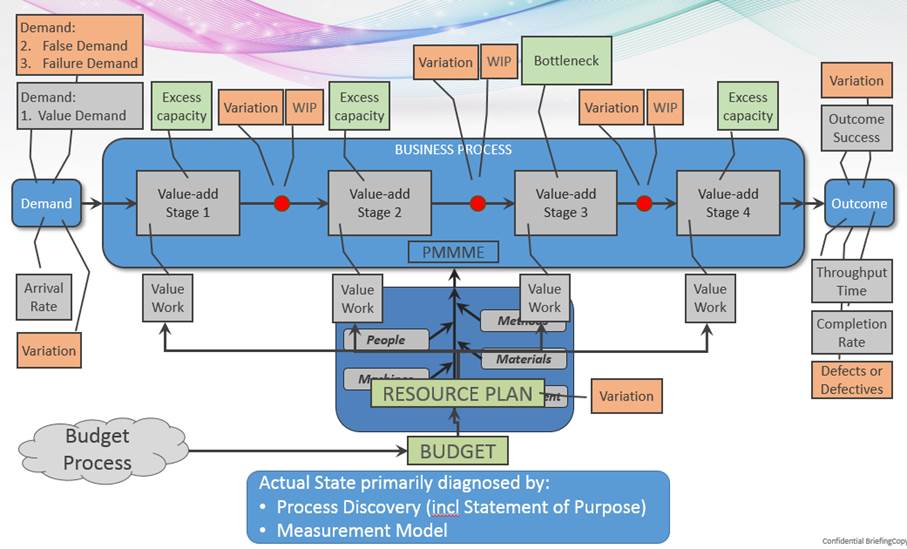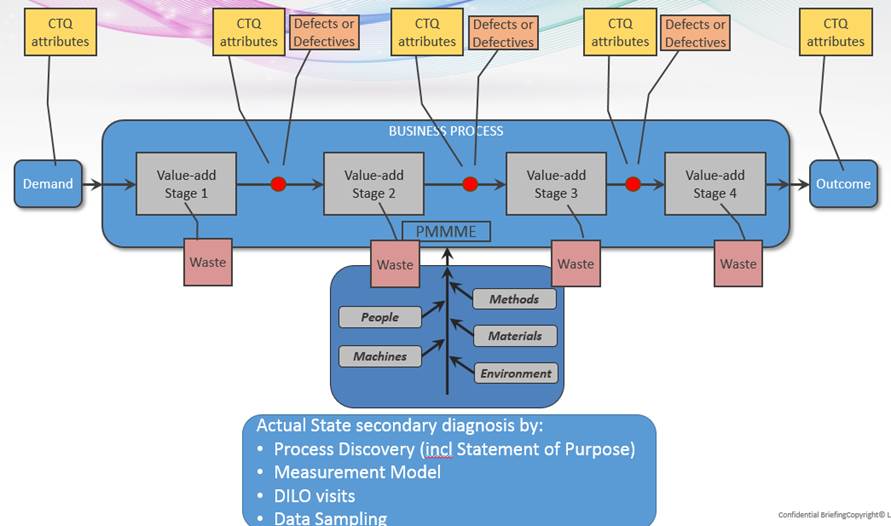Methods, Methods, and Methods… Part 2 of 2
04/09/2017


So in our previous blog, we mentioned that we come across challenges like – “We’re going to do ‘Demand Management’ using Method ‘X’”. Per previous blog, our usual response is to unpick this requirement statement to understand two concepts – Demand Management and Method X.
To recap on why we look at Demand Management, it is with an eye to understanding demand, and to characterise it against a well-defined purpose, and set in context in terms of flow towards an outcome, to identify waste and failure demand. There are methods for doing this, such as the Vanguard Method, Lean and variants of the Toyota Production System, for example. However, we noted this is only part of the story, since in certain process types (namely T2R – Trouble to Resolve) actual (or value) demand can also be worked on to improve the overall system. So any method must include the capability to understand sources of value demand, and how to remove or limit the impact of such sources.
Furthermore, some methods focus on identifying and redesigning bottlenecks – but anyone who has read “The Goal” by Eli Goldratt will know, every system, every process, will have a bottleneck, so there’s more to it than that. So the method must be able to identify and enable improvement action of constraints causing bottlenecks, or recognise you have to live with them.
That’s not all, some failure demand may be due to missing CTQ (critical to quality) attributes – so we must capture these in the method.
Finally (well finally for this blog anyway) a massive problem overlooked by many methods is understanding the impact of variation (in control and out of control – and there’s a difference requiring different improvement action). Even without a specific bottleneck, variation can cause WIP (Work In Progress or Backlogs) to build up causing apparent bottlenecks. If it is out of control variation, the apparent bottlenecks can move between stages over time, frustrating efforts focused on just one stage that simply add costs rather than solve the problem! Variation can cause failure demand, unwanted outcomes, under/over resourcing and more…..
So, any one of the well-recognised methods by itself is not fit for purpose in most cases – a blend of methods and techniques is required (just as you cannot do maths with only addition/subtraction (unless you’re a computer!), you need multiplication/division, use of powers/roots, trigonometry, calculus, and, and, and…. depending on the kind of problem you’re trying to solve).
Visualising and Understanding Demand (grey boxes represent what you design for, beige and green boxes are what you actually get that you might not want!) – 1

Visualising and Understanding Demand (grey boxes represent what you design for, orange is what is critical, beige and violet are what you actually get that you might not want!) – 2

So, what exactly is the blend of methods we actually use in our endeavours? Well they’re not in any management fad, on any bandwagon. Nor in any book – yet!
Categories & Tags:
Leave a comment on this post:
You might also like…
Keren Tuv: My Cranfield experience studying Renewable Energy
Hello, my name is Keren, I am from London, UK, and I am studying Renewable Energy MSc. My journey to discovering Cranfield University began when I first decided to return to academia to pursue ...
3D Metal Manufacturing in space: A look into the future
David Rico Sierra, Research Fellow in Additive Manufacturing, was recently involved in an exciting project to manufacture parts using 3D printers in space. Here he reflects on his time working with Airbus in Toulouse… ...
A Legacy of Courage: From India to Britain, Three Generations Find Their Home
My story begins with my grandfather, who plucked up the courage to travel aboard at the age of 22 and start a new life in the UK. I don’t think he would have thought that ...
Cranfield to JLR: mastering mechatronics for a dream career
My name is Jerin Tom, and in 2023 I graduated from Cranfield with an MSc in Automotive Mechatronics. Originally from India, I've always been fascinated by the world of automobiles. Why Cranfield and the ...
Bringing the vision of advanced air mobility closer to reality
Experts at Cranfield University led by Professor Antonios Tsourdos, Head of the Autonomous and Cyber-Physical Systems Centre, are part of the Air Mobility Ecosystem Consortium (AMEC), which aims to demonstrate the commercial and operational ...
Using grey literature in your research: A short guide
As you research and write your thesis, you might come across, or be looking for, ‘grey literature’. This is quite simply material that is either unpublished, or published but not in a commercial form. Types ...






